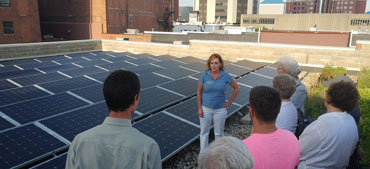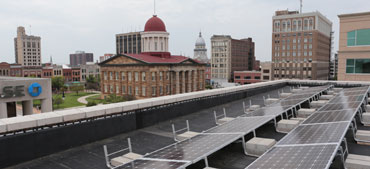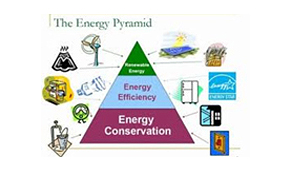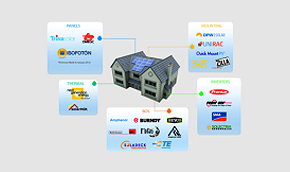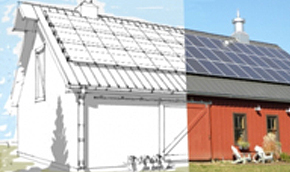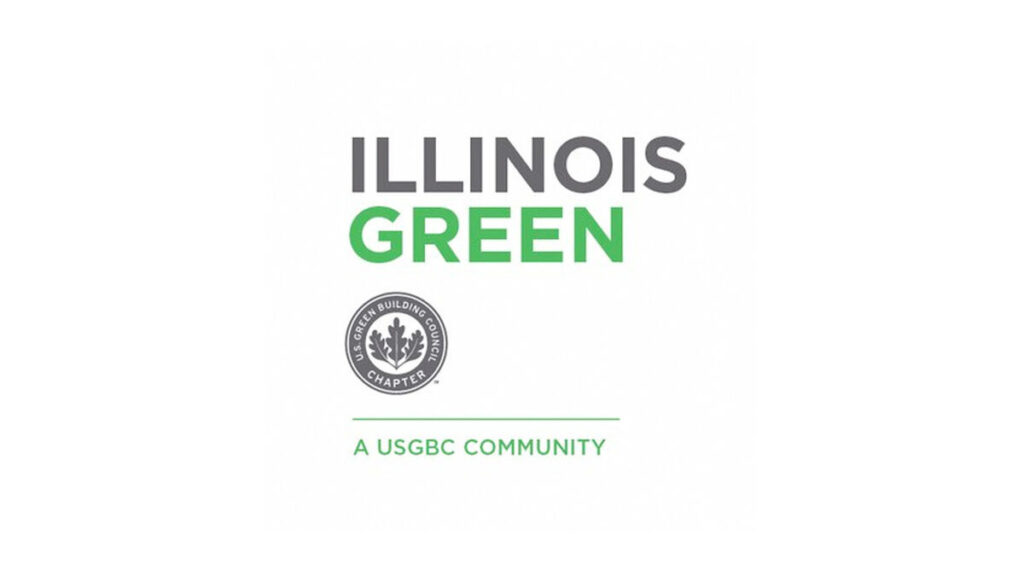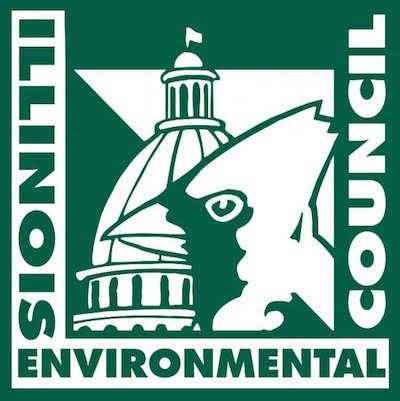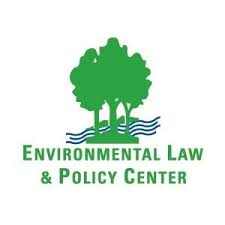Originally published via Solar Empower
Interview with Michelle Knox – Wind Solar USA
In today’s interview, we have Michelle Knox, the owner of Wind Solar USA, a full-service renewable energy and energy efficiency company offering solar photovoltaics, solar pool heating, wind and LED lighting technologies.
| Can you please introduce yourself to me and to our readers?
My name is Michelle Knox. I am the owner and founder of WindSolarUSA, located in Springfield, Illinois.
| Can you tell us a little bit about how you decided to start this company?
It’s an interesting story. Back in 2007, I was enjoying an adult beverage with a friend who was from Colorado. He was more versed in solar, having come from that region versus the Midwest. He presented a question to me, he said “I wonder if someone could take out a loan to buy solar, use the savings each month from the utility to pay that loan, pay it off, and then at the end have free energy from the sun.”
At the time, I was a Montessori teacher and I had summers off, and that question was very interesting to me. So, I took the summer to research to see if I believed that could happen at that point in time, back in 2007. I found that I thought it could, but it would be about a 20-year payback. But I was like, “well, who wouldn’t buy something that’s going to pay for itself? And then still give something for free for the last five years.”
I then decided that I would develop a renewable energy business and researched to find training facilities. At the time, there were only two in the whole United States; one was in Colorado, and the other was the Midwest Renewable Energy Association in Custer, Wisconsin.
Wisconsin was a lot closer to Illinois than was Colorado, so I chose the MREA and I began a three and a half year educational endeavor to train myself on wind, solar photovoltaics and solar thermal through the MREA before going full-time with my business in November of 2011.
| Was it hard getting your business off the ground? I mean, now you are obviously in a better place, but what about that initial process? It must have been hard getting to this point.
It was. Initially, being able to build that customer base and getting to the point that you have customers that can send you referrals was difficult.
My approach was from an educational standpoint. I did a lot of presentations to the public where I’d partner with a local community college, or some other institution and then offer free education to those who wanted to hear it. That was a good source of generating leads.
I also did a little bit of print advertising in certain periodicals that I thought would reach my target audience. Initially I financed all of this myself, primarily because my vision was to “build something from nothing”.
I didn’t take out loans so the company has basically built itself and is self-sufficient.
| Were you a full-time employee and working on your business?
Yes. I was working full-time as the Development Director for St. Patrick Catholic School, which is a mission school located on the east side of Springfield, IL that helps an underserved population. I was helping to raise money and keep that school afloat, and would use my vacation time and PTO days to be able to go to training to develop my business. I was also a single mother at the time!
| What is your main job in the company? What do you do to help someone who comes to you? How do you help them?
My office consists of two office staff. There’s myself and my Office Manager. I am really the point guard, and she is a girl that makes everything happen in the background. So, when someone calls and they’re interested in talking about solar:
- I intake the information
- I send it to her
- We put together a proposal
- I do the sales presentation, make the sale
- We develop the project in terms of subcontracting with our subcontractors
- We handle the product procurement and project management
- We handle finalizing everything with the customer in terms of making sure their renewable energy credit information is submitted, they have all their final receipts and everything they need for their tax credit, etc.
| Do you have any plans to expand your company, hire more people or?
I never wanted to be like this big thing. I certainly could do that, but with expansion means there’s more to manage, more people to pay attention to…
I’m a believer in doing what you do and doing it the best you can. I’m not a greedy person, I’m not looking to make millions of dollars, but I am looking to have a comfortable living and hopefully someday be able to retire. So, as long as I can accomplish that and create an opportunity for people to use clean energy and enjoy the process in doing so, that’s my ambition.
| You say you work with both solar and wind. Did you ever advise someone, who comes to you asking for a solar system, to go with a wind one instead? Does that ever happen?
When I originally started, in 2007, wind was really a big thing. Wind energy was “sexy”! At the time, to give some perspective, a 10KW wind installation cost about $75,000 and a 10KW solar installation cost about $65,000, but the two were really neck and neck when it came to the final energy output, with wind slightly winning.
However, shortly thereafter, the price of solar products started dropping, and incentives for solar became more prevalent. Today, a 10KW solar system can be installed for about $31,000, but a 10KW wind system is still about $75,000.
From that $31,000, you get a 30% federal tax credit. In the state of Illinois, we also have renewable energy credits and that accounts for 50-60% of project cost. So by the time you come down to the final price, it becomes a no-brainer!
| You say the prices have changed… are people more interested in solar than they used to be, is it becoming more popular?
It’s becoming more popular, that’s for sure! In terms of price changes, product pricing came down by over 50% i.e. from $6.50 a watt to about $3.10 a watt. With those incentives solar has seen tremendous growth in the State of Illinois. We presently have a goal of 40% renewables by 2030 for the investor-owned utility territories, which is pretty aggressive.
In terms of technology, the basics haven’t changed all that much since the 1970s. What has changed is that the cell efficiency has increased. So, all modules have 60, 72 or 96 cells, and each one of those little cells has a certain output. The output per cell has increased significantly. In 2013, I was installing 240-250 watt modules. Today, I’m installing 345 up to 415 watt modules. So, cell efficiency has increased significantly, which allows us to get more bang out of the same space.
| What about net metering in Illinois?
We have a great net metering policy in the investor-owned utility territories.
In Illinois, we have three different types of utility structures:
- Investor-owned utilities (Ameren, ComEd and Mid American)
- Municipal electric utilities – those are ones for cities that own their own wires and infrastructure
- And rural electric cooperatives
Munis and co-ops do not have public oversight, their oversight comes from their city councils for munis or in the case of rural electric cooperatives, it’s by their boards that are elected officials by their member-owners (in theory). Those city councils/boards make the decisions as to what policies the utility will follow.
In the investor-owned utility territories, we have full retail net metering with an annual reconciliation that can be either April 30 or October 30, which allows a customer to be able to feed back any overproduction and bank it, and then pull from it up until the reconciliation date. As of that reconciliation date, if there’s anything left in the bank, they zero it out. The customer gets no compensation for it, and the bank starts over.
For rural electric cooperative territories and municipal utility territories, it’s all over the board. Some offer full retail net metering, but have size limitations. With the investor-owned utilities, the size limitation is whatever you need to feed your annual load or five megawatts, whichever s less. In the rural electric cooperative and municipal utility territories, it’s generally limited to 10KW or 25KW AC based on inverter size.
So, someone working in the state of Illinois has to be really well-versed on the policies of the territories that they’re working in, to make sure that they’re modeling customers correctly and giving them a true financial picture of what that 25-year outlook’s going to look like based on the information we have at present.
| Can you tell me more about the finances? How can someone who wants to build a solar system finance it?
Well, this girl’s an advocate of local banks. I am not an advocate of solar finance projects or offerings simply because when I investigated them originally, the way that most of them work is they want you to take your project cost, then take the term that the customer wants, i.e. five years @ 5.9%, and then they want me to slide my finger across, figure out what kind of fee I need to add to their project cost to accommodate for that, add that to the project cost, take that new project cost, and then slide my finger down here to say, “oh, for the simple fee of $299.95 a month, you can go solar.” To me, it sounds like a used car salesman (no offense)…I don’t operate like that.
Accordingly, I partner with local banks. I have several go-to banks that have developed solar finance programs that are traditional financing either based on a home improvement loan, refinancing a mortgage; whatever might be in the customer’s best interest. By doing it this way, it’s just a true straightforward loan with no hidden fees/costs and shyster maneuvers. The best part is we keep the money in the local economy, which is also important to me.
| Can we maybe talk a little bit about the general state of solar? What do you see as some of the greatest challenges for solar at the moment?
The fossil fuel industry and their lobby, that’s basically the greatest obstacle because with the Inflation Reduction Act passing on a federal level we’ve restored the federal tax credit for solar projects to 30% through the end of 2032.
That creates stability! I think what the industry has lacked all these years is stability. We didn’t have much of it, at least with the incentives, but the landscape is changing.
The other thing I see as an issue is the product supply chain, as we were especially reminded of during COVID.
However, I feel like both of those things are getting dialed in at this point. I think the reluctance of the fossil fuel industry to move to a clean energy economy is because of the lack of storage capacities. Which is something that I think really has to become prevalent because renewables are variable resources. As they like to say, the wind doesn’t always blow and the sun doesn’t always shine. Those are true statements.
So, as someone in the industry, I’m like, I agree with you a hundred percent. And I think that what we need to do is to be building storage assets so that we can store these renewable sources to be able to have dispatchable power at times that we need them.
I think all parties should work together. I’m a believer in collaboration and cooperation versus running one side or the other down. I think we just have to be progressive, understand where we as a country want to go and where we as a world need to go and then work together to make that happen.


